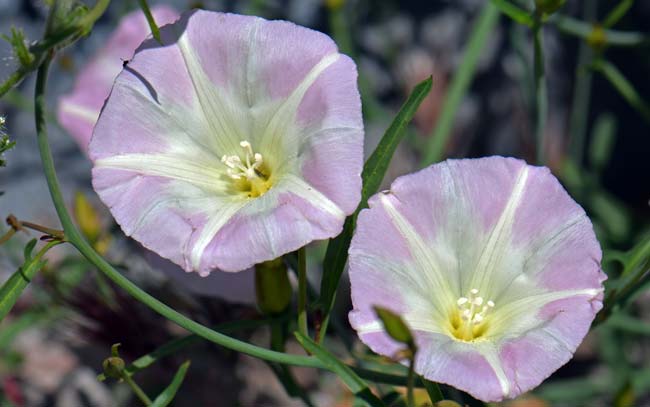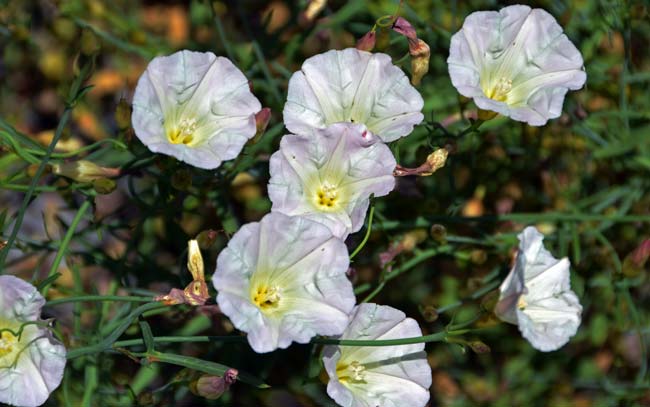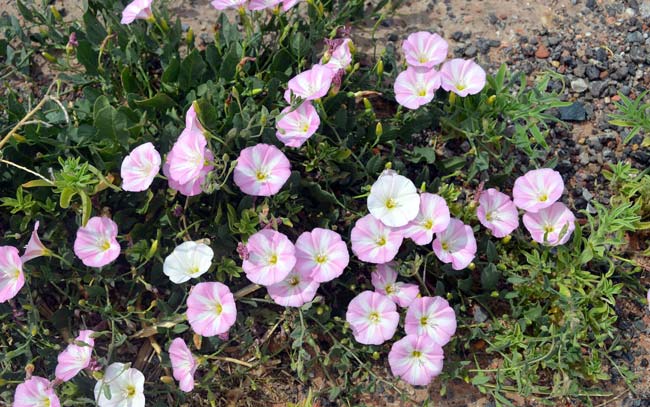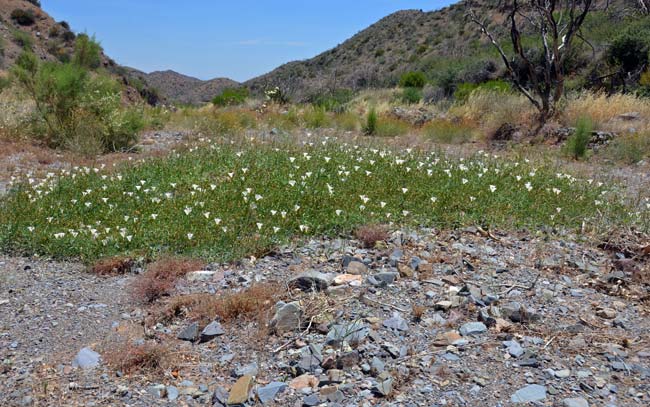Calystegia longipes, Paiute False Bindweed




Scientific Name: Calystegia longipes
Common Name: Paiute False Bindweed
Also Called: Plateau Morningglory
Family: Convolvulaceae, Morning Glory Family
Synonyms: (Convolvulus linearilobus, Convolvulus longipes)
Status: Native
Duration: Perennial
Size: Up to 2 or more feet, matted branches spreading 2 feet or more.
Growth Form: Forb/herb; vine; woody, numerous stems and/or branches, erect or spreading, twining branches forming a bushy mat which can be up to 2 or more feet high.
Leaves: Green; alternate, triangle or deltoid; highly variable, narrow lobes, linear or lanceolate, hastate; lower leaves up to 3 inches long, upper leaves reduced to bracts.
Flower Color: White or cream (fades to pale pink or lavender); inflorescence with solitary flower, long peduncles up to 7 inches or more, peduncles with bracts, fruit a 4-valved capsular.
Flowering Season: March to October; California, (May to July) and Texas, (March to June).
Elevation: 2,000 to 5,000 feet.
Habitat Preferences: Various habitat types, desert scrub, chaparral-oak habitats, dry washes and banks, rocky slopes.
Recorded Range: Relatively rare in the United States where it is found in AZ, CA, NV (extreme SE) and UT (extreme SW). In Arizona this species is generally found in central and northwestern parts of the state.
North America & US County Distribution Map for Calystegia longipes.
U.S. Weed Information: No information available.
Invasive/Noxious Weed Information: No information available.
Wetland Indicator: No information available.
Threatened/Endangered Information: No information available.
Comments: Although somewhat rare in the United States, Paiute False Bindweed may be common in locations where found.
See ethno-botanical uses identified at Native American Ethnobotany, University of Michigan, Dearborn.

